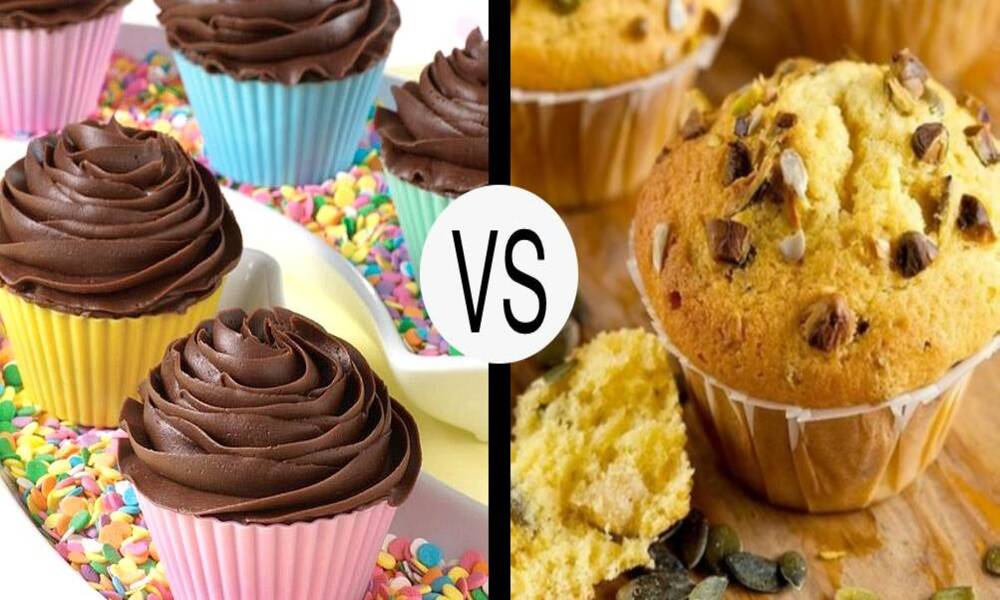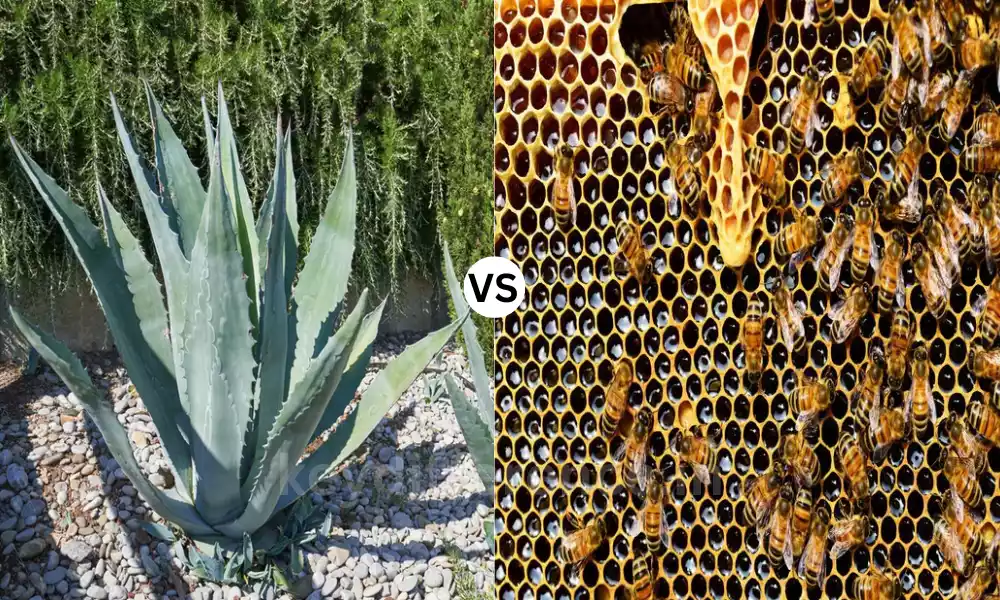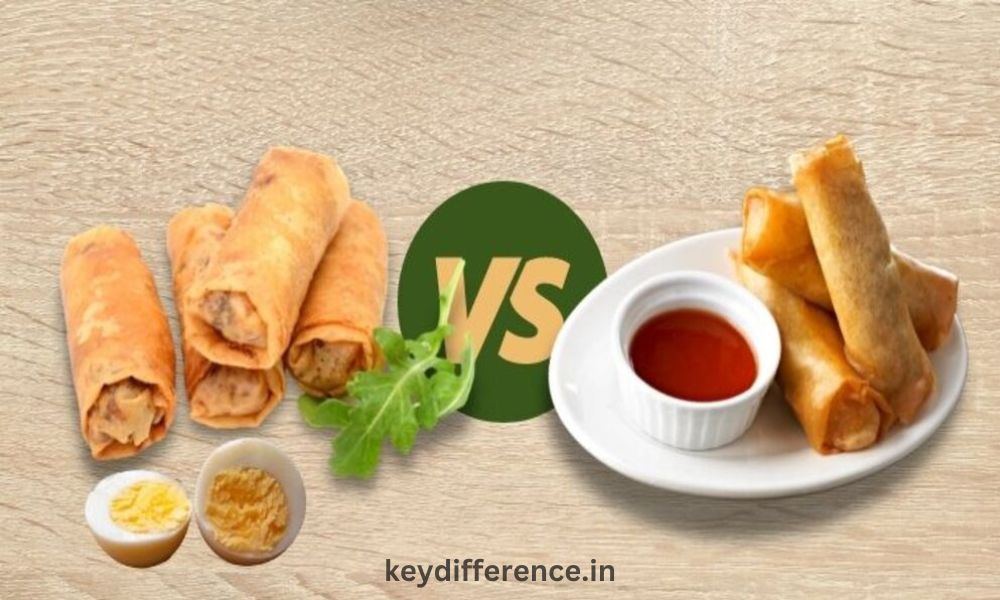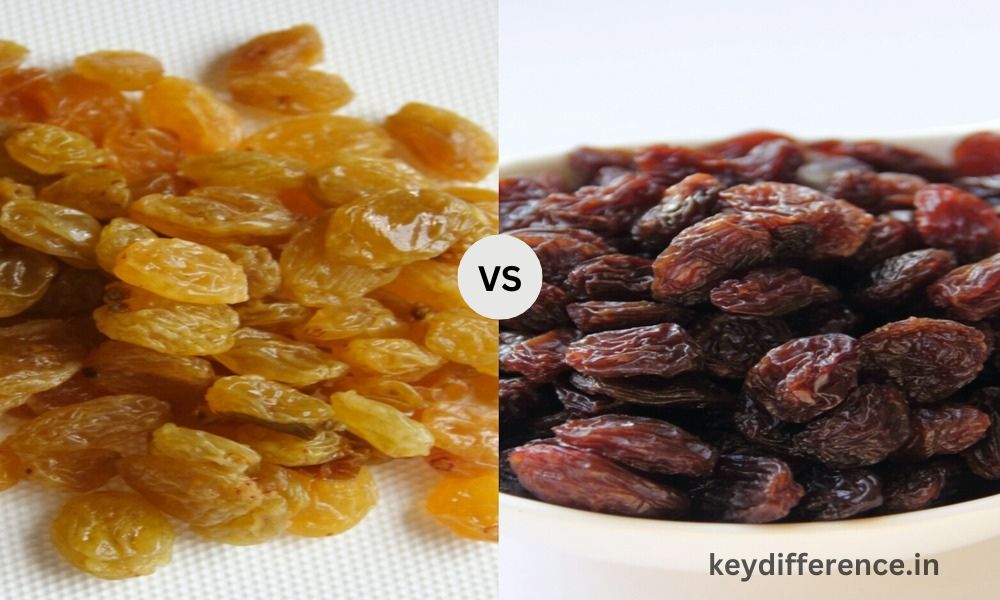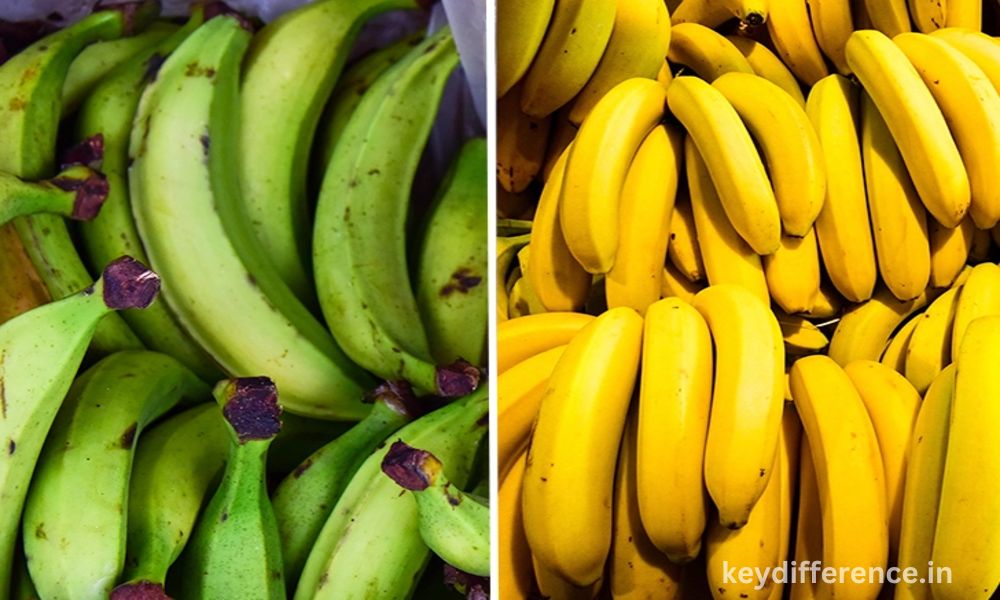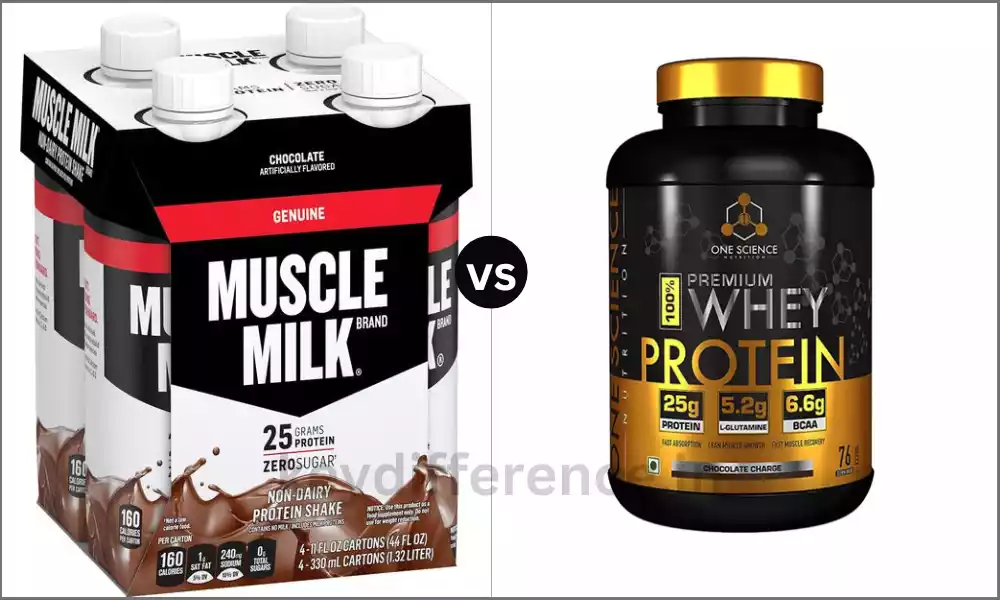Introduction
Muffins and cupcakes are two delicious baked goods that often share similar appearances, yet each boasts distinct differences in terms of texture, flavor, and purpose.
Understanding the Differences between muffins and Cupcakes will expand your culinary expertise and enable you to make informed choices when purchasing or baking these Delightful confections.
By the time we reach our final stop on this journey, you will possess an in-depth knowledge of what sets each treat apart – so let’s embark on this adventure to explore their differences!
What is a muffin?
Muffins are individual-sized baked bread products that are typically sweet and quick to prepare. A muffin’s appearance resembles that of a cupcake but has more substantial and denser textures.
Muffins can be enjoyed as breakfast or snacks and come with various ingredients and flavors such as fruits, nuts, chocolate chips or spices; often served plain or with butter jam or other spreads; domed tops with slightly coarse crumb textures are hallmarks of quality muffins made in muffin tins or cups for baking.
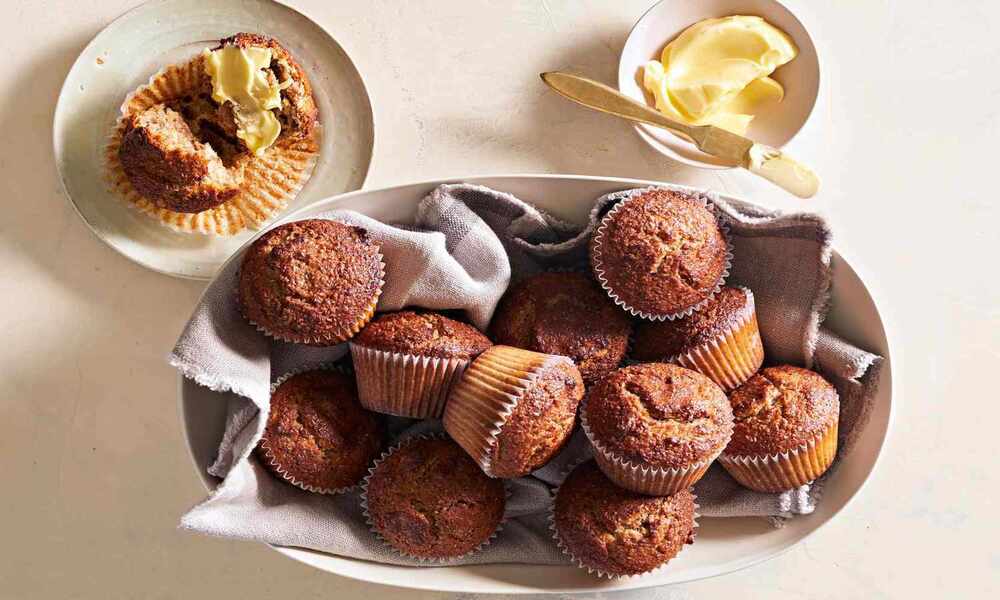
What is cupcake?
Cupcakes are individual-sized cakes typically sweetened and decorated with frosting or other sweet toppings, similar to muffins but typically lighter and fluffier in texture.
Cupcakes are enjoyed most commonly as dessert and often associated with special events like birthdays, parties or weddings; their popularity rising exponentially each time!
Served sweetened and decorated using buttercream, cream cheese ganache or other forms of decorative frosting they’re popular across generations and event types! Typically baked using cupcake liners or molds they can be enjoyed by people of all ages alike!
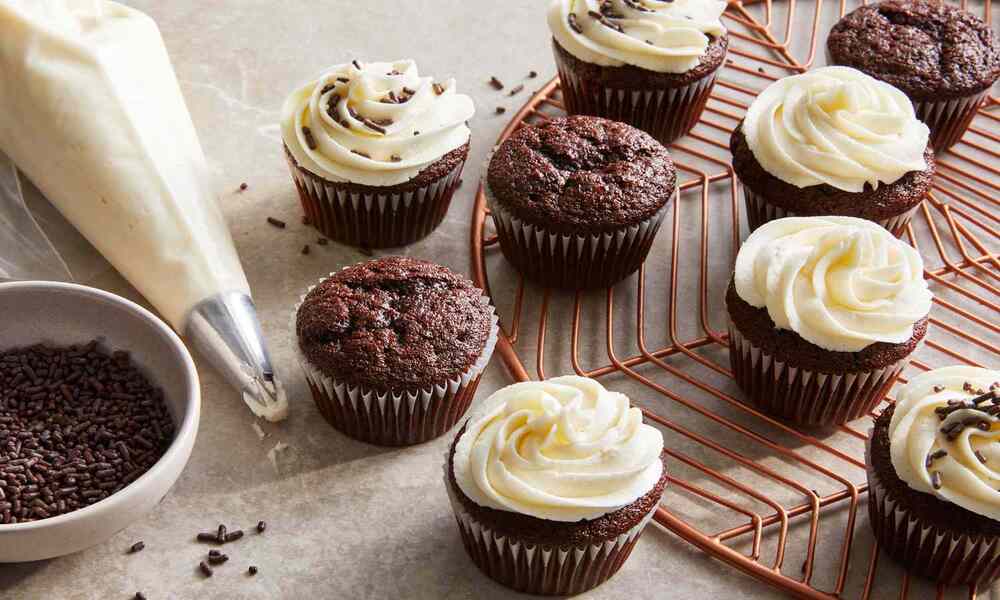
Comparison Table of Muffin and Cupcakes
Sure! Here’s a comparison table highlighting the key differences between muffins and cupcakes:
| Aspect | Muffins | Cupcakes |
|---|---|---|
| Texture | Denser and more substantial | Lighter and fluffier |
| Crumb | Slightly coarse | Fine and tender |
| Appearance | Rustic | Decorated with frosting or toppings |
| Sweetness | Less sweet | Sweeter |
| Flavor | Focus on added ingredients | Often have pronounced flavorings |
| Serving | Breakfast or snack | Dessert |
| Toppings | Sprinkling of sugar, oats, or nuts | Frostings and various toppings |
| Baking Technique | Batter mixed until just combined | Batter creamed to incorporate air |
| Occasions | Casual, everyday enjoyment | Special occasions (birthdays, parties) |
This table provides a quick overview of the main distinctions between muffins and cupcakes, showcasing their differences in terms of texture, appearance, sweetness, serving occasions, and more.
Texture and Appearance
Muffin Texture:
- Denser and more substantial: Muffins have a denser texture than cupcakes, providing more satisfying bites. Slightly coarse crumb: Muffins typically feature a slightly coarse and crumbly crumb which contributes to their rustic charm.
- Rustic Appearance: Muffins have an unadorned, rustic appearance with their characteristic domed tops and natural texture, creating an appealing rustic charm.
Cupcake Texture:
- Fluffier and Lighter: Cupcakes are known for their light and fluffy texture which creates a delicate mouthfeel and experience for their audience.
Cupcakes feature a fine and tender crumb for an ultra-smooth texture compared to muffins. - Decorated with Frosting or Toppings: Cupcakes can be Decorated using various types of frostings such as Buttercream or cream cheese and can feature Sprinkles, edible decorations and other edible Toppings to make them visually Appealing.
Muffins and cupcakes differ considerably in texture and appearance; muffins have a denser, slightly coarse texture while cupcakes boast lighter and fluffier textures with finer crumb structures. Muffins generally feature rustic appearances while cupcakes may feature decorative toppings to add visual interest.
Muffin texture
Muffin Texture: Muffins are known for their unique texture, which sets them apart from cupcakes. Muffin textures can be described in the following ways:
Muffins have a denser texture than cupcakes, which gives them more substance when held. When holding one in your hands, there may be weight to it too!
Moist and Tender: Muffins boast an irresistibly tender crumb despite their dense composition, creating a satisfying mouthfeel without being dry or crumbly.
Muffins often feature a slightly coarse crumb structure, giving them an authentic homemade and rustic charm with visible air pockets throughout their interiors.
Sturdy and filling: Muffins are designed to be filling and substantial. Their structure holds up well when loaded with fruits, nuts, or chocolate chips without losing its integrity.
Domed top: Muffins typically feature a domed top, which forms during baking, that gives them their iconic appearance and enhances texture experience. This adds another level to their memorable appeal.
muffins have an irresistibly delicious texture, with moist yet tender crumb that offers satisfying, substantial bites – making them the ideal breakfast or hearty snack choice!
Denser and more substantial
Muffin Texture: Muffins are known for their dense and substantial texture when compared with cupcakes, giving them a distinct bite when being bit. Here are some key facts regarding their denseness and substance:
Heft and Weight: Muffins have a noticeable weight and heft when held. In contrast to cupcakes which tend to have lighter and airier textures.
Muffins boast a firmer structure due to their denser composition, meaning they hold their shape well without crumbling easily.
Satisfying bite experience: Muffins provide a satisfying bite experience, giving a satisfying sensation and being more filling compared to lighter cakes such as cupcakes.
Muffins Are Perfect for Add-Ins: Muffins’ dense texture enables them to accommodate various add-ins like fruits, nuts and chocolate chips without disrupting their overall structure.
Sturdiness: Muffins are hardy baked goods that can withstand handling and transportation without breaking or crumbling, thanks to their denser texture.
Overall, muffins boast a dense and substantial texture which offers satisfying mouthfeel and substantial presence – an element that adds to their appeal as an indulgent and comforting treat suited for breakfast or snack time.
Cupcake texture
Cupcake Texture: Cupcakes are famously known for their light and fluffy texture, setting them apart from muffins. Here are a few key points about their texture:
Light and Airy: Cupcakes boast a light, airy texture that gives them a delicate mouthfeel. Less dense than muffins and lighter overall, cupcakes have an airy quality which creates an irresistibly delicate bite.
Soft and Tender: Cupcakes feature a deliciously soft and tender crumb, creating a smooth and succulent experience in your mouth. Their velvety or cake-like texture has even earned them their name!
Cupcakes typically feature a dense and refined crumb structure compared to muffins, making their crumb more refined and refined in appearance.
Moistness: Cupcakes are famous for their moist texture, which adds an inviting charm. Their combination of lightness and moistness provides an enjoyable texture experience.
Fluffiness: For optimal cupcake results, the batter must be thoroughly mixed during its creation process in order to incorporate air. This method yields fluffy textures with lighter overall effects.
Delicate and Fragile: Due to their light texture, cupcakes may be more fragile and susceptible to crumbling than muffins; thus special care must be taken when handling and transporting them.
Cupcakes are distinguished by their light texture, fluffy fluffiness, and tender crumb. As a result, their delicate yet enjoyable eating experience has become popular for indulgent desserts or special events.
Lighter and fluffier
Cupcake Texture: Cupcakes are well known for their lighter and fluffier texture, setting them apart from muffins. Here are some key characteristics of cupcakes’ texturing:
Cupcakes boast an airy texture that gives them a pleasant and delicate mouthfeel, distinguishing them from denser items like muffins.
Cupcakes feature a fine and fluffy crumb structure, creating a tender bite-in-your-mouth experience when eaten.
Moisturiness: Cupcakes tend to be moist due to a careful blend of ingredients and baking techniques, contributing to their soft and tender texture. Moisture plays an integral part in tenderness as well as in creating an enjoyable texture for you to experience!
Springy and Sofky: Cupcakes can be described as springy and sofky, with their light texture making them appear springy when touched or bit into. When touched or bite into, their lightness becomes immediately evident as they rebound slightly showing their springiness.
Cupcakes boast delicate and tender textures that allow them to dissolve easily in your mouth, adding another dimension of fluffiness and tenderness that enhances their appeal.
Less Substantial: Cupcakes tend to have a lighter and easier-to-digest texture, making them the ideal treat for individual servings.
Cupcakes’ lighter and fluffier texture contributes to their charm and popularity as delicious desserts. Their soft, moist and springy textures offer an enjoyable eating experience when combined with various toppings used to decorate them.
Typically decorated with frosting or other toppings
Cupcake Texture: Cupcakes are known for their light and fluffy texture as well as their decorative features, with these being some of the common decorations and toppings found on cupcakes.
Frostings: Cupcakes can often be seen topped off with various kinds of frostings such as buttercream, cream cheese or ganache to give them that added delicious flavor and visual appeal. Frosting adds an irresistibly creamy element that adds depth and richness.
Piping and Swirls: Frosting can be piped onto cupcakes using various techniques, creating stunning swirls, rosettes, or other decorative patterns that give each cupcake its own special appearance. Piping allows artists to express themselves creatively while customizing every cupcake for maximum customization and personalization – truly making each experience truly individual!
Sprinkles and Decorations: Cupcakes can often be embellished with colorful sprinkles, edible pearls or other decorations to give the desserts a festive look and add visual interest. These toppings add fun and festive appeal to the cupcakes making them visually appealing treats!
Edible Images or Fondant Decorations: Cupcakes can be customized for special events by decorating with edible images and fondant decorations such as themed designs, characters or personalized messages to make them extra memorable. This adds an individualized touch that makes each celebration even more meaningful!
Cupcake Toppings and Fillings: Cupcakes can feature additional toppings or fillings to enhance their flavor and texture, such as fruit compotes, chocolate ganache, caramel drizzle, crushed cookies or nuts, further heightening both taste and visual experience.
Cupcake decorations and toppings play an essential part in their presentation and aesthetic appeal, offering endless customization opportunities in terms of flavor combinations, designs, and flavors. Cupcakes make an exquisite treat for special events and celebrations!
Sweetness and Flavor
Muffin Sweetness: By and large, muffins tend to have lower levels of sweetness compared to cupcakes; their focus tends to lie more on flavor-rich ingredients rather than overt sweetness.
Muffins derive their sweetness primarily from ingredients like fruit (such as bananas or berries ) or natural sugars found in carrots or pumpkins.
Cupcake Sweetness: Sweeter: Cupcakes tend to have more of a sweet taste compared to muffins and can provide satisfying sweet cravings more effectively.
Sugar and Flavorings: Cupcakes depend heavily on added sugar and flavors such as vanilla extract or cocoa powder to achieve their unique sweetness, often in conjunction with other ingredients to form a harmonious flavor profile.
Flavor: Muffin flavors vary considerably, often featuring ingredients like blueberries or apples as the focus, along with spices like cinnamon or nutmeg to complete their profile and lend depth and complexity. Subtle aromas add depth while complementing texture and heartiness of any muffin treat.
Cupcake Flavors: Cupcakes boast an array of intense and distinct flavors that create diverse sensory experiences, from chocolate and lemon tart to red velvet velvet or other combinations that offer distinctive tastes.
Muffins and cupcakes differ significantly when it comes to sweetness and flavor profiles; muffins tend to be less sweet with an emphasis on ingredients while cupcakes have sweeter profiles designed to satisfy dessert cravings. Muffins often offer subtler flavors while cupcakes offer bolder ones for maximum indulgent satisfaction.
Muffin sweetness
Muffin Sweetness: Muffins typically exhibit lower levels of sweetness compared to cupcakes. Here are a few key details regarding muffin sweetness.
Muffins tend to be less sweet in comparison with cupcakes; their flavors instead put more emphasis on adding ingredients without an overwhelming sweet taste.
Muffins derive their sweetness primarily from the ingredients they contain. If fruits such as bananas, apples or berries are added, their natural sweetness adds another dimension. Furthermore, carrots or pumpkin contain natural sugars which add depth of flavor.
Sweetness May Vary: Muffins’ level of sweetness depends heavily on their recipe and ingredients used, from honey or maple syrup additions to subtler sweeteners such as vanilla.
Balance with other flavors: Muffins generally strike an ideal balance between their sweet ingredients and other distinctive ones, allowing each to shine while providing just a hint of sweetness.
Muffins typically boast more subtle sweetness, relying on natural sweeteners such as honey rather than an overly sugary taste. As such, muffins make an excellent treat for those seeking less indulgent or dessert-like foods and are frequently enjoyed for breakfast or snacks.
Generally less sweet
Muffin Sweetness: Muffins are famously less sugary than their cupcake counterparts, with key points about the sweetness of muffins being:
Moderate Sweetness: Muffins typically feature an ideal balance between sweetness and tartness, providing just a subtle hint that complements their ingredients’ flavors while leaving enough sweetness for enjoyment.
Focus on natural sweetness: Muffins typically get their sweetness from natural sources like fruits, vegetables or natural sweeteners like honey or maple syrup that contain natural sugars that provide sweetness.
Complementing Other Flavors: Muffins’ moderate sweetness is specifically designed to accentuate and highlight other flavors, from blueberry sweetness and natural sugars in carrots, to subtle spice sweetness – creating an ideal balance of flavors that brings them all together in each muffin!
Breakfast or snacks: Muffins make an ideal treat to have for breakfast or satisfying snack options, thanks to their less sweet nature and pleasing sweetness without becoming overly sugary – making them adaptable and appealing on all sorts of occasions.
Muffins offer a delicious treat that provides moderate sweetness with its natural sugars, complementing other flavors beautifully and offering something less sweet yet still delicious and pleasurable to enjoy.
A muffin makes an excellent baked good option to satisfy those who prefer less-than-decadent baked treats while providing something flavorful, yet enjoyable baked good options.
Focus more on the flavors of added ingredients
Muffin Sweetness: Muffins tend to emphasize flavor over sweetness when it comes to their design, so here are a few key points about muffin sweetness:
Muffins draw their sweetness primarily from their added ingredients. Be it natural sugars found in fruits such as bananas, blueberries or apples; or the more subtle sweetness found in carrots and pumpkin; muffins highlight these components’ flavors to produce their delectable sweetness.
Subdued sweetness: Muffins typically feature less intensely sweet flavors compared to cupcakes, allowing the ingredients to shine without being overwhelmed by excessive sugar content.
Muffins strive to achieve a harmonious combination of sweetness and other flavors in their muffins, by using ingredients such as spices like cinnamon or nutmeg or the richness of nuts or chocolate chips to add depth of flavor.
These ingredients help achieve this balance between sweetness and other tastes that come together harmoniously to form one delicious muffin experience!
Versatility in sweetness level: Muffins offer a range of sweetness levels depending on both their recipe and personal preferences, from more sweetening agents like honey or maple syrup being added, to those having more restrained sweetness.
Muffins offer a more subdued sweetness, letting the individual ingredients shine through as the main attraction. This makes muffins an incredibly versatile baked good that can be enjoyed for breakfast, snacking, or using as the basis of unique flavor combinations.
Baking Techniques
Muffin Baking Techniques:
Muffin Mixing Method: Muffins can typically be created using the muffin mixing method, which involves combining dry and wet ingredients in separate bowls before quickly and lightly mixing together just until combined – no overmixing should take place as this will lead to development of gluten and produce tougher textures in your baked good!
Leavening agents: Muffins use leavening agents such as baking powder and/or soda to achieve their desired texture and rise. These ingredients create carbon dioxide gas when combined with moisture and heat, creating lighter textures and creating carbon dioxide gas as they do so.
Resting Time: Allowing the muffin batter to rest before baking allows the leavening agents to activate and spread throughout the batter evenly, which ensures consistent rising and more tender textures. This resting period also helps ensure consistent rising.
Baking temperature: Muffins should generally be baked at an ideal baking temperature of 350 to 375degF (175degC), to allow even browning without excessive drying or overbrowning on the exterior surface. B. Cupcake Baking Techniques:
Creaming Method: Cupcakes can often be made using the creaming method, in which butter and sugar are combined together and beaten until air has been incorporated into their texture. After this step has taken place, eggs and wet ingredients such as vanilla are then added, followed by the dry ingredients.
Leavening agents: Cupcakes typically rely on baking powder and/or soda as leavening agents, creating carbon dioxide gas bubbles during baking to cause their cupcakes to rise and become light and airy.
Beating and Incorporating Air: When mixing cupcakes, air is added by beating vigorously for several minutes in order to create fluffy texture that contributes to their lighter overall feel. This step ensures fluffy textures for more fluffy bites!
Baking Temperature: Cupcakes should generally be baked at slightly higher temperatures than muffins – typically 350 to 375degF (175degC). This allows them to achieve their signature domed top and golden-brown crust while remaining moist and tender inside.
Baking techniques vary for muffins and cupcakes depending on their desired texture and structure, reflecting individual preferences for texture and structure.
Muffins generally employ quick mixing while cupcakes often use creaming methods to incorporate air. Leavening agents as well as temperature settings also have an impactful influence on how muffins or cupcakes turn out.
Toppings and Frosting
Muffin Toppings: Muffins typically require minimal or no toppings when enjoyed. Instead, ingredients like fruits, nuts or chocolate chips can be baked directly into the batter for additional flavor and texture.
Streusel or crumb Toppings: Certain muffin varieties, such as blueberry or coffee cake muffins, may feature a crunchy streusel or crumb topping to give their surface some crunch and add sweetness.
Cupcake Frosting and Toppings:
Frosting: Cupcakes are often decorated with frosting to add a sweet finish and increase their visual appeal. Popular options for decorating cupcakes with frosting include buttercream frosting, cream cheese frosting and ganache; piped onto them using various techniques allows for creative designs and patterns.
Flavor variations: Cupcake frostings can be customized to complement their cupcake base. For instance, chocolate cupcakes could pair well with chocolate ganache or cream cheese frosting while vanilla cupcakes could feature vanilla buttercream or fruit-inspired frostings.
Decoration Elements: Cupcakes provide limitless opportunities for creative toppings and decorations, from sprinkles, edible pearls, or colored sugar to edible images, fondant decorations or fresh fruit slices – creating endless variations and styles!
Fillings: Cupcakes can come topped off with different fillings such as fruit compotes, chocolate ganache or caramel for an added burst of flavor and moisture boost. These add extra moisture and depth of flavor.
Cupcakes provide more opportunities for elaborate and decorative toppings compared to muffins. While muffins typically only feature basic streusel/crumb additions, cupcakes offer a wider variety of frosting flavors, decorative elements, fillings and filling options, making cupcakes ideal for special events and celebrations.
Conclusion
muffins and cupcakes may appear similar at first glance, yet each has distinct qualities that set it apart from one another. Understanding these distinctions between muffins and cupcakes will enable you to appreciate and savor each treat for its individual merits.
Muffins are known for their dense and substantial texture, often due to the use of ingredients such as whole grains or hearty fruits. With moderate levels of sweetness that highlight flavors rather than excessive sugariness, muffins are usually enjoyed without elaborate toppings such as streusel or crumb toppings for added texture.

